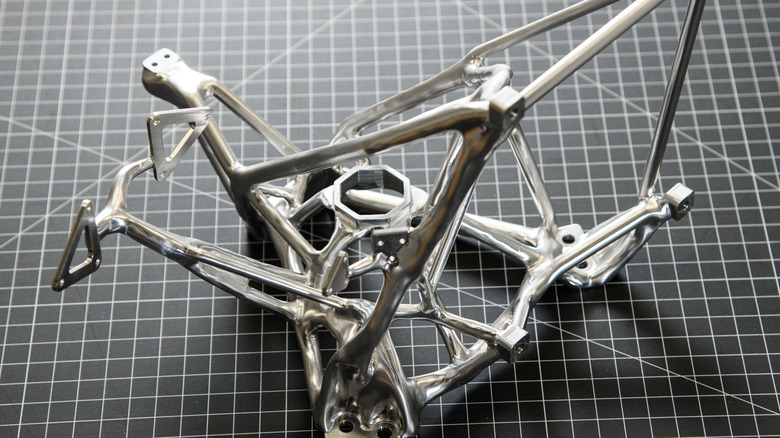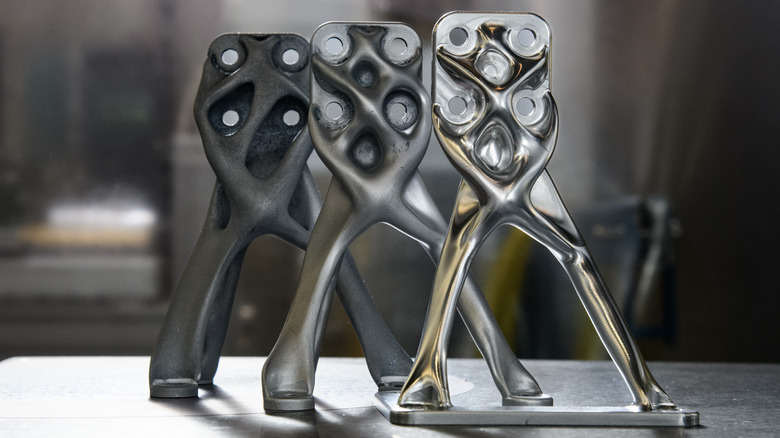The Revolutionary Way NASA Uses AI To Design Hardware For Other Worlds
Artificial intelligence (AI) is having a moment right now. ChatGPT is all over the news, image generators are cropping up left and right, and Elon Musk just publicly called for stricter AI regulation before admitting his outsized role in ushering this technology into the mainstream — whoops!
Now you can add to that list that NASA is using AI to design components for spacecraft and other precision instruments. So far, it seems to be a natural pairing, because the hardware designed this way looks a lot more alien in origin than it does terrestrial. At the same time, these struts and brackets and mounting pieces also have a sort of strange organic quality to them that nearly defies description. They're called "evolved structures."
According to NASA, the process start with a prompt, just like with other generative AI algorithms. In this case, the prompt will come from a design specialist or engineer. The prompt takes the form of constraints: four bolts need to go here; this point will experience 10 g's of acceleration in this direction; a technician's hand needs room here to pull a cable through. After that, the computer is left on its own to work out the details.
The AI can design complex solutions in just a few hours. As reported by Fast Company, it will design, analyze, and then reiterate the part every couple of minutes, a process that would take days of a team of skilled professionals. And speed isn't the only thing the AI has going for it.
Already impressive, and just getting started
Putting things into space is NASA's bread and butter. Unsurprisingly, it's also an incredibly expensive enterprise. A lot of that has to do with weight. The more something weighs, the more fuel it takes to get it off the surface of the Earth. Of course, the fuel has weight too, so adding more fuel then requires adding even more fuel to lift the fuel just added. Frankly, it's exhausting. For that reason, it costs about $10,000 for every pound of payload launched into Earth orbit (via NASA).
What's that have to do with NASA's AI-designed components? Compared to components that go through a more traditional design process, the evolved structures "save up to two-thirds the weight," according to NASA. That can pay dividends in two different ways. First, the total weight of the payload — where every ounce counts — can be reduced, translating to real dollars. Secondly, the weight savings gained from structural hardware can be used to add more scientific equipment of value to the payload, translating to more efficient use of funds. And if that all wasn't enough, evolved structures reduce stress load by ten times, NASA notes.
Of course, this is just the beginning. NASA envisions this technology eventually merging with future 3D printing techniques that will manufacture hardware from local materials such as Moon dust or Martian sand. But seeing as NASA needs thousands of unique and critical components every year, this technology still has plenty of work to do right here on Earth.

